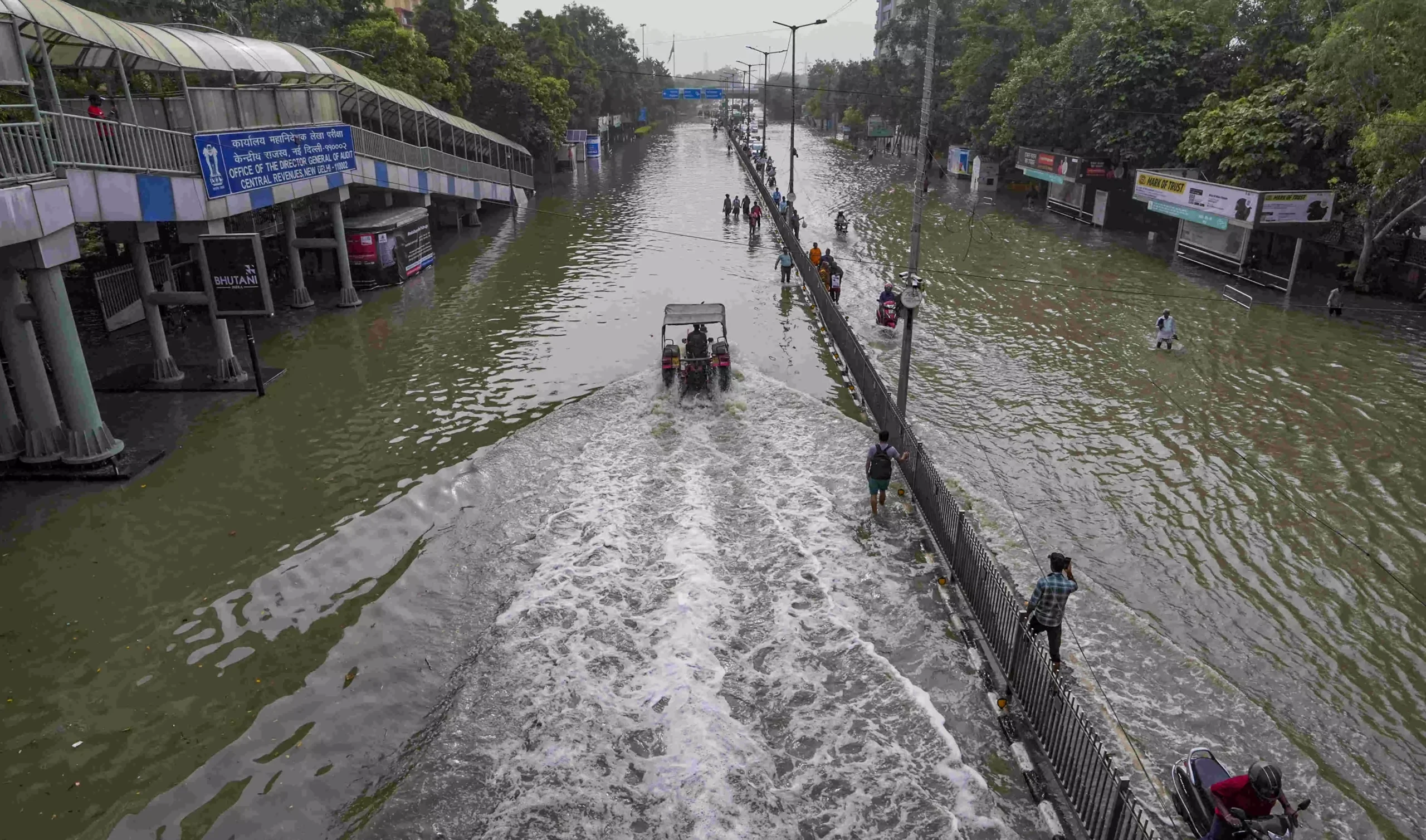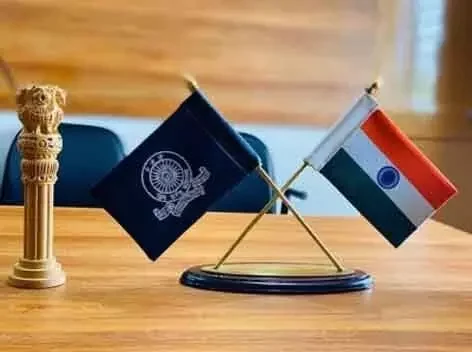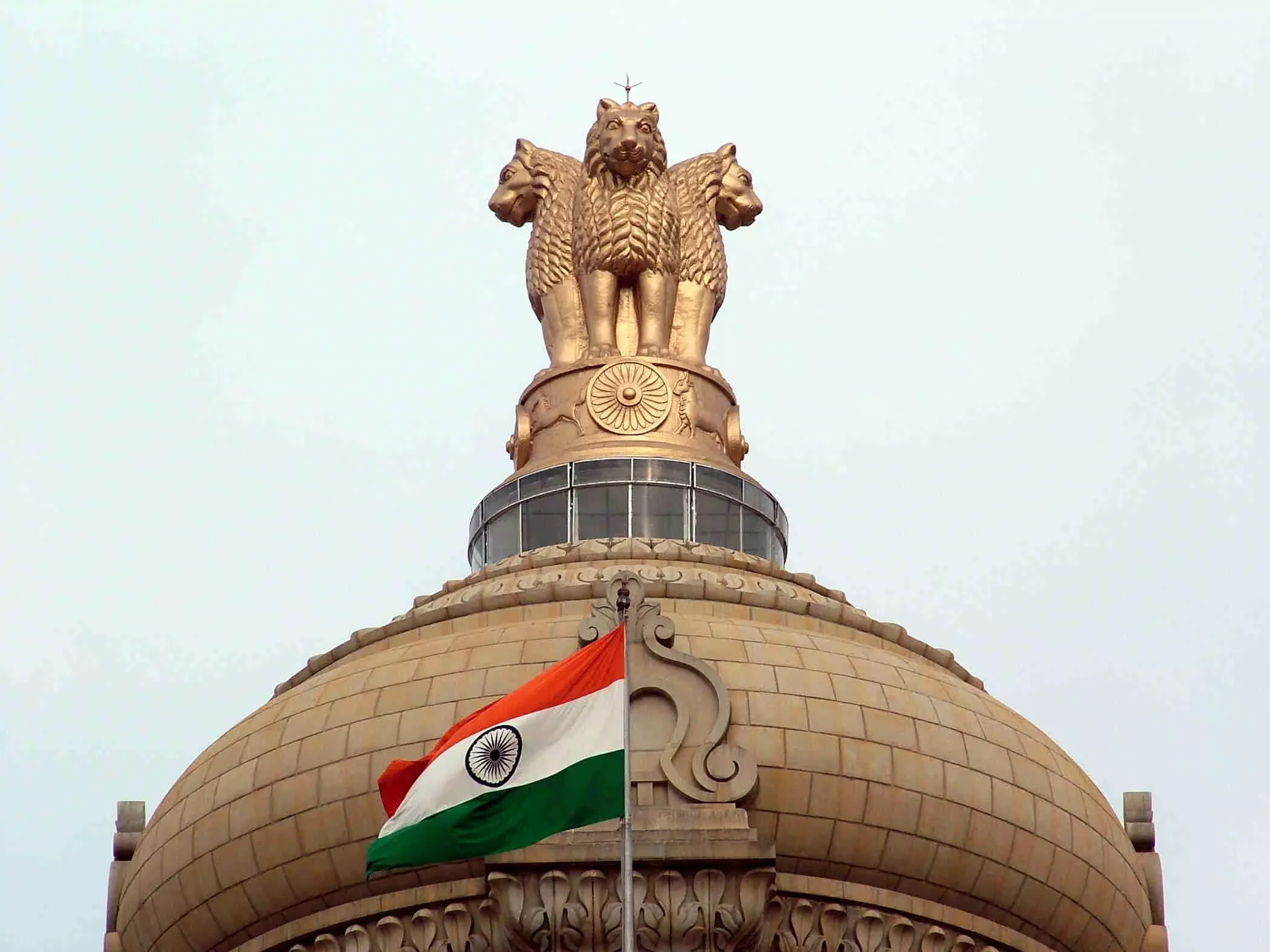Glaring lapses
Urban misgovernance, illegal encroachments, and fast-depleting urban water bodies are the root causes behind the massive deluge faced by major Indian cities
All of us have been concerned by the pictures of major cities, including the national capital of Delhi, being flooded by heavy monsoon showers. A blame game is going on, and it is being said that there has been unusually extreme heavy rainfall that the drainage system was not geared to handle. Undeniably, the rainfall has been excessive, perhaps the heaviest downpour in a day, breaking records of over 40 years. However, making this an excuse for an unprepared drainage system is not acceptable. Climate change has given rise to unpredictable climate issues, and the last several years have witnessed heavy rainfall getting concentrated within a couple of days. The system should have anticipated and been ready for this. Better planning and proactive measures are the answers to this kind of situation.
In any case, it was distressing to see the national capital of Delhi being deluged by the rains, with water flowing above knee level. In the past two decades, we have seen similar flooding take place in cities like Mumbai, Chennai, Kolkata, Hyderabad, and Ahmedabad. The main causes of this phenomenon are illegal encroachments, inadequate stormwater drainage capacity, the disappearance of urban wetlands, which used to function as natural drains, and the tendency of solid waste being dumped into the drains and clogging them. Stormwater drains are an essential part of urban infrastructure, yet my experience of working in the urban development department has been that it is perhaps the most unglamorous activity and receives the least attention from urban governments. In many cities, stormwater drains were constructed almost 100 years ago and are now in no position to handle the increase in the intensity of rainfall brought about by the vagaries of climate change. The Government of India is aware of this problem and has issued detailed guidelines to upgrade these stormwater drains, but either due to a paucity of funds, lack of technical knowledge, or simply a careless approach, these guidelines have not been implemented in many cities.
Strange as it may sound, many cities do not have proper drainage maps that show the location, gradient, and outflow of these drains. How can we talk of having smart cities if we do not have an idea of the drainage system? Interestingly, I recall when I was the Municipal Commissioner of Allahabad in the late 1980s, there was an area in the city that used to get heavily waterlogged during every monsoon. On enquiring and delving into the details, I was amazed to find that in several portions, the drain was sloping in the wrong direction, leading to the accumulation of water. This was not an isolated incident; similar situations could be present in many cities and require a detailed inspection of the drainage system.
Every year before the monsoon, elaborate instructions are issued for cleaning the drains so that the garbage in the drains is taken out and the drains are desilted. Unfortunately, despite huge amounts of money being spent, this activity never gets done properly due to collusion between the Municipal staff and the contractors, or simply because of poor supervision and monitoring. Sometimes, the silt taken out of the drains is stacked on the side of the drain and conveniently finds its way back into the drain with the very first monsoon shower. To complicate the matter, there are several areas that are unauthorized or informal and do not have drains or sewers, and the water has no place to go. In many places, particularly in market areas, the drains have been encroached upon, leading to the accumulation of water and flooding of the roads.
Most of the cities have historically had urban wetlands that provide a natural avenue for water to flow into. These urban wetlands have disappeared at an alarming pace, replaced by concrete structures that block the natural flow of water. Lucknow Municipal Corporation had 964 ponds in 1952, but only 494 remained in 2006, and the figure must have substantially reduced by now. Bangalore had 260 lakes in the 1960s, but only 80 remained in 2019. Devashish Dhar, in his book on managing our cities, has quoted ADB experts as saying that between 1970 and 2014, Mumbai lost 71 per cent of its wetlands, Hyderabad 55 per cent, NCR Delhi 38 per cent, Ahmedabad 57 per cent, and Greater Bangalore 56 per cent. Obviously, this means that we have lost out on the natural water regulation and flow in a big manner. We must urgently attend to rejuvenating urban water bodies, which recharge the groundwater and also assist in absorbing rainwater.
The causes are well known, as are the measures to be taken to redress this problem. However, it requires a strong will on the part of the government and also funds. The issue is not only a technical one but ultimately one of reforming urban finances and urban governance. The focus has to be on urban planning and innovative ways of developing infrastructure and financing.
For example, the city of Kuala Lumpur has constructed a huge stormwater drain and road tunnel that carries a large amount of water from the city to a storage reservoir, protecting the city from flash floods. Similarly, China has started a “sponge city” initiative under which, by 2030, chosen districts will be able to capture, reuse, and absorb 80 per cent of the stormwater runoff.
The root cause of the problem is urban governance, which needs to be addressed urgently. The 73rd and 74th Constitutional amendments took a huge stride in this direction, but the States have not been forthcoming in implementing the constitutional amendments in letter and spirit. Both the politicians and the bureaucrats are responsible for this. The MLAs and MPs do not want to share political space with the local body elected representatives like the Mayor and Chairman of Municipalities, and the bureaucrats resent any reform which they perceive as bringing about a reduction in their authority. Janaagraha, an NGO that has done excellent work in the area of urban development, carried out an annual survey of Indian city systems to assess the quality of governance in selected Indian cities. The benchmark cities for this survey, London and New York, scored as high as 9.3 and 9.8, respectively, while the Indian cities scored an average of 3.5, showing the poor state of governance in Indian cities.
If we have to address the problems of drainage, sewerage, solid waste management, urban transport, urban pollution, or slum development, then the topmost priority has to be given to urban governance reforms. The Mayor and the councillors need to be empowered and held accountable. There is a need for sustained effort to build their capacities. Senior civil servants with the right kind of aptitude need to be selected to serve in urban Municipal corporations for a reasonable tenure. A cadre of city managers is required with the right kind of qualifications and training. Similarly, a separate competent cadre of engineers and other technical personnel, such as waste management experts, is required to be developed.
Funds, functions, and functionaries must be transferred to the local bodies, and grassroots democracy in the cities should be strengthened to ensure accountability. Parastatals like development authorities must, sooner or later, cede space to the municipal corporation. The cities must generate sufficient resources of their own, and there should be a larger devolution of funds from the States to the urban local bodies. Technology must become an essential ingredient of urban government. If serious thinking on these issues is done, policies formulated, and implemented, then our cities can surely become engines of growth, providing a high quality of life to its citizens.










